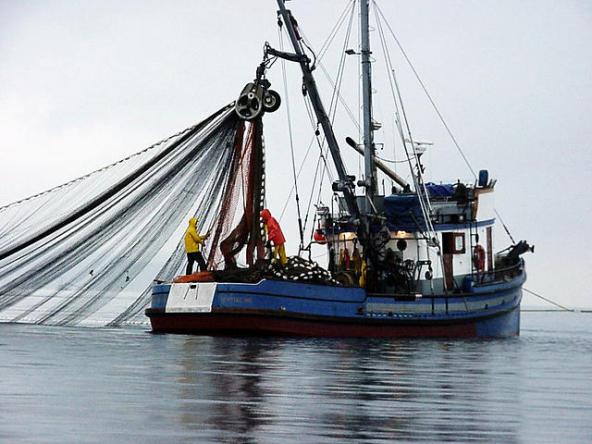
Changes in the total catch of a species do not always correspond to changes in total biomass or changes in the species’ distribution alone. This discrepancy drove Dr. Rebecca Selden, former Pinsky lab post-doc and current Assistant Professor at Wesleyan College, and colleagues to seek a greater understanding of the forces driving both fish stock availability and catch at US West Coast ports in their recently published article.
The team first sought to couple changes in a species’ biomass with the species’ distribution to explain the heterogeneity in stock availability experienced by fisheries across different latitudes. They measured the change in distribution and biomass of five commercial target species (dover sole, thornyheads, sablefish, lingcod, and petrale sole), and found that the timing and magnitude of stock declines and recoveries are not experienced uniformly along the coast when they coincide with shifts in species distributions.
Second, they integrated information on distances travelled by fishers with estimates of availability along the coast to generate port-specific indices of availability. They found that additional factors, like greater vessel mobility and larger areal extent of fish habitat, affect availability, and may work to counteract or augment the effects of changing fish biomass and distribution.
Lastly, they found that higher stock availability was not consistently associated with higher catch per ticket. Because fish landings were not consistently related to stock availability, Selden et al. suggest that social, economic, and regulatory factors likely constrain or facilitate the capacity for fishers to adapt to changes in fish availability.
